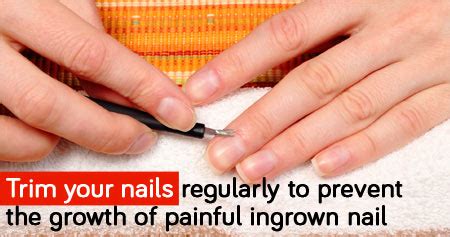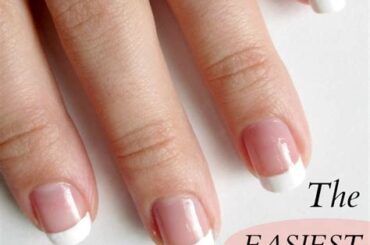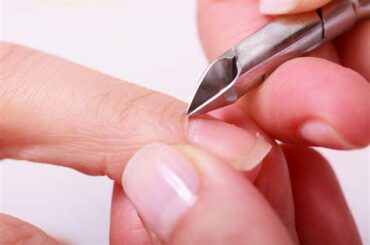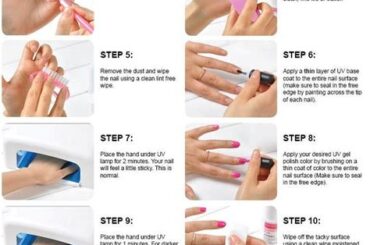Discover the importance of nail maintenance for your pet’s overall health, including tips for preventing overgrown nails, avoiding breakage, and promoting healthy paw structure. Enhance your grooming routine and bond with your pet through nail care.
Importance of nail maintenance
Nail maintenance for your pet is a crucial aspect of their overall health and wellbeing. Keeping your pet’s nails properly trimmed and cared for can have a significant impact on their mobility, comfort, and overall grooming routine. Overgrown nails can lead to a variety of issues, including nail breakage, infections, and discomfort. By regularly maintaining your pet’s nails, you can prevent these issues and promote healthy paw structure.
Regular nail trims also play a role in preventing ingrown nails, which can be painful for your pet and lead to more serious health problems if left untreated. By keeping your pet’s nails at an appropriate length, you can reduce the risk of ingrown nails and promote their overall comfort and wellness. Additionally, maintaining your pet’s nails can enhance your bonding and positive reinforcement during grooming sessions, as it provides an opportunity for you to interact with your pet in a calm and gentle manner.
In summary, regular nail maintenance is an essential part of your pet’s overall grooming routine and wellbeing. By prioritizing nail care, you can prevent overgrown nails, avoid breakage, promote healthy paw structure, improve mobility and comfort, prevent infections, reduce the risk of ingrown nails, and enhance your overall grooming routine, all while strengthening your bond with your beloved pet.
Preventing overgrown nails
The Benefits of Regular Nail Trims
Regular nail trims are essential for preventing overgrown nails in pets. Overgrown nails can cause discomfort and even lead to more serious health issues if left unchecked. By keeping your pet’s nails trimmed, you can help prevent the risk of overgrowth and ensure that your pet has proper paw structure and mobility.
When nails are left to grow too long, they can become more prone to breakage and can affect your pet’s ability to walk and move comfortably. This can be especially problematic in older pets or those with joint issues. By regularly trimming your pet’s nails, you can improve their overall mobility and comfort and reduce the risk of injury and discomfort.
Regular nail trims also help enhance your overall grooming routine and provide an opportunity for bonding and positive reinforcement with your pet. By making nail trims a regular part of your pet’s grooming routine, you can help reduce the stress and anxiety often associated with nail trims and create a positive experience for both you and your pet.
Avoiding nail breakage
Here is the HTML format for the blog post on Avoiding Nail Breakage:
Avoiding Nail Breakage
Avoiding Nail Breakage
Regular nail trims are essential for maintaining your pet’s overall health and well-being. When your pet’s nails become overgrown, they are more likely to break and cause discomfort. By trimming your pet’s nails regularly, you can prevent nail breakage and promote healthy paw structure.
Overgrown nails can also affect your pet’s mobility and comfort. When the nails are too long, it can be painful for your pet to walk or stand. This can lead to joint and posture issues over time. By keeping your pet’s nails at an appropriate length, you can improve their mobility and comfort.
In addition to physical discomfort, overgrown nails can also increase the risk of nail infections and ingrown nails. When the nails are not properly trimmed, dirt and bacteria can get trapped underneath them, leading to infections. Ingrown nails can be extremely painful and may require veterinary attention. By preventing nail breakage through regular trims, you can reduce the risk of these uncomfortable and potentially serious conditions.
Promoting healthy paw structure
The Benefits of Regular Nail Trims
Regular nail trims for your pet play a crucial role in promoting healthy paw structure. When nails are allowed to become overgrown, they can alter the natural alignment of the toes and lead to improper weight distribution. This can result in discomfort, joint issues, and even mobility problems. By maintaining regular nail trims, you can help ensure that your pet’s paws remain in good shape, allowing for proper weight-bearing and promoting overall foot health.
Moreover, overgrown nails can also cause the toes to splay or twist, negatively impacting the overall structure of the paw. This can lead to long-term issues such as muscle strain and arthritis. Regular nail trims not only prevent overgrown nails but also contribute to maintaining the correct positioning and alignment of the toes, which is essential for a healthy paw structure.
Besides the physical benefits, keeping your pet’s nails at an appropriate length through regular trims can also contribute to their emotional well-being. Untrimmed nails can cause discomfort and even pain, affecting your pet’s behavior and mood. By promoting healthy paw structure through nail maintenance, you can enhance your pet’s overall comfort and quality of life.
Improving mobility and comfort
The Benefits of Regular Nail Trims
Regular nail trims for your pet can have a significant impact on their mobility and overall comfort. When a pet’s nails are overgrown, it can cause difficulty walking and even lead to joint pain. By keeping their nails at the appropriate length, you can ensure that their paws are properly aligned and reduce the risk of strain on their legs and hips.
Overgrown nails can also affect a pet’s ability to grip and navigate various surfaces, such as hardwood floors or outdoor terrain. By preventing overgrown nails through regular trims, you can promote better stability and confidence in your pet’s movements, ultimately enhancing their mobility and comfort.
Additionally, maintaining proper nail length can prevent the occurrence of painful nail breakage, which can be a common issue for pets with excessively long nails. By staying proactive with nail maintenance, you can help your pet avoid discomfort and potential injury, ultimately contributing to their overall well-being.
Preventing nail infections
Regular nail trims are essential for keeping your pet’s nails healthy and preventing nail infections. When nails are allowed to become too long, they can easily break or split, creating an open wound that is susceptible to infection. By maintaining proper nail length, you can significantly reduce the risk of infection and keep your pet’s paws healthy and comfortable.
Additionally, overgrown nails can cause your pet to walk improperly, putting unnecessary stress on their joints and increasing the likelihood of developing arthritis or other mobility issues. By staying on top of nail maintenance, you can promote overall paw health and improve your pet’s comfort and mobility.
Regular nail trims also provide an opportunity to inspect your pet’s paws for any signs of infection or injury. By keeping a close eye on your pet’s nails and paw pads, you can catch potential issues early and seek treatment before they develop into more serious problems.
Reducing risk of ingrown nails
Ingrown nails in pets can be a painful and uncomfortable condition, causing your furry friend a lot of distress. Fortunately, there are several steps you can take to reduce the risk of ingrown nails and keep your pet’s paws healthy and happy.
Regular nail trims are essential for preventing ingrown nails. If your pet’s nails are allowed to grow too long, they are more likely to curl and grow into the surrounding skin, leading to potential infections and discomfort. By keeping your pet’s nails trimmed to an appropriate length, you can help minimize the risk of ingrown nails and promote overall paw health.
Another important aspect of avoiding ingrown nails is to ensure that your pet’s nails are not excessively curved. If your pet’s nails are naturally curved, it’s important to keep an eye on their growth and trim them more frequently to prevent them from growing into the paw pad. Regular grooming and maintenance can help keep your pet’s nails in good shape and reduce the likelihood of ingrown nails.
Enhancing overall grooming routine
Regular grooming is an essential aspect of pet care that contributes to their overall health and well-being. One often overlooked component of grooming is maintaining your pet’s nails. Trimming your pet’s nails on a regular basis can have a number of benefits that go beyond just keeping their nails at a manageable length. It can also play a significant role in enhancing the overall grooming routine for your furry friend.
By incorporating nail maintenance into your pet’s grooming routine, you are promoting proper paw structure and mobility. Overgrown nails can cause your pet discomfort and lead to issues with their posture and movement. By keeping their nails at an appropriate length, you are ensuring that they can walk, run, and play without any hindrance or discomfort, ultimately contributing to their overall well-being.
Regular nail trims also help in preventing infections and reducing the risk of ingrown nails. Long nails can easily get caught on surfaces, leading to injuries and possible infections. By keeping their nails trimmed, you are reducing the likelihood of these issues and promoting a healthier and more comfortable experience for your pet. This in turn enhances the overall grooming routine by minimizing potential complications and ensuring a positive experience for your furry friend.
Bonding and positive reinforcement
The Benefits of Regular Nail Trims
Regular nail trims are not only important for maintaining the health of your pet’s paws, but they also provide a wonderful opportunity for bonding and positive reinforcement. By regularly handling your pet’s paws and engaging in nail trimming sessions, you can create a positive association with the experience. This can strengthen the bond between you and your pet, as they learn to trust and feel comfortable with the process.
Positive reinforcement techniques, such as offering treats and verbal praise during and after nail trims, can further enhance the bonding experience. When your pet learns that they will be rewarded for good behavior, they are more likely to cooperate during future nail trimming sessions. This positive interaction can also help reduce anxiety and fear associated with nail trims, making it a more pleasant experience for both you and your pet.
Overall, regular nail trims provide not only physical benefits for your pet, but also the opportunity for positive bonding and reinforcement. By incorporating these sessions into your grooming routine, you can strengthen your relationship with your pet and promote a sense of trust and comfort.
Frequently Asked Questions
How often should I trim my dog’s nails?
Most dogs need their nails trimmed every 1-2 months.
What are the benefits of regular nail trims for dogs?
Regular nail trims can prevent painful overgrowth, reduce the risk of injury, and improve your dog’s posture and mobility.
What tools do I need to trim my dog’s nails at home?
You will need a pair of nail clippers or a nail grinder specifically designed for dogs, as well as styptic powder to stop any bleeding if you accidentally cut the quick.
How can I train my dog to tolerate nail trims?
Start by getting your dog used to having their paws handled, and gradually introduce the sound of the nail clippers or grinder. Always offer treats and praise during the process.
What are signs that my dog’s nails are too long?
If you hear clicking on hard surfaces, notice your dog limping, or see the nails curling or growing into the pads, it’s time for a trim.
Should I take my dog to a professional for nail trims?
If you’re uncomfortable trimming your dog’s nails yourself, or if your dog becomes stressed or aggressive during the process, it’s best to seek the help of a professional groomer or veterinarian.
Are there any risks associated with nail trims for dogs?
Accidentally cutting the quick can cause bleeding and pain, so it’s important to be cautious and prepared with styptic powder. Some dogs may also experience anxiety or fear during nail trims.





